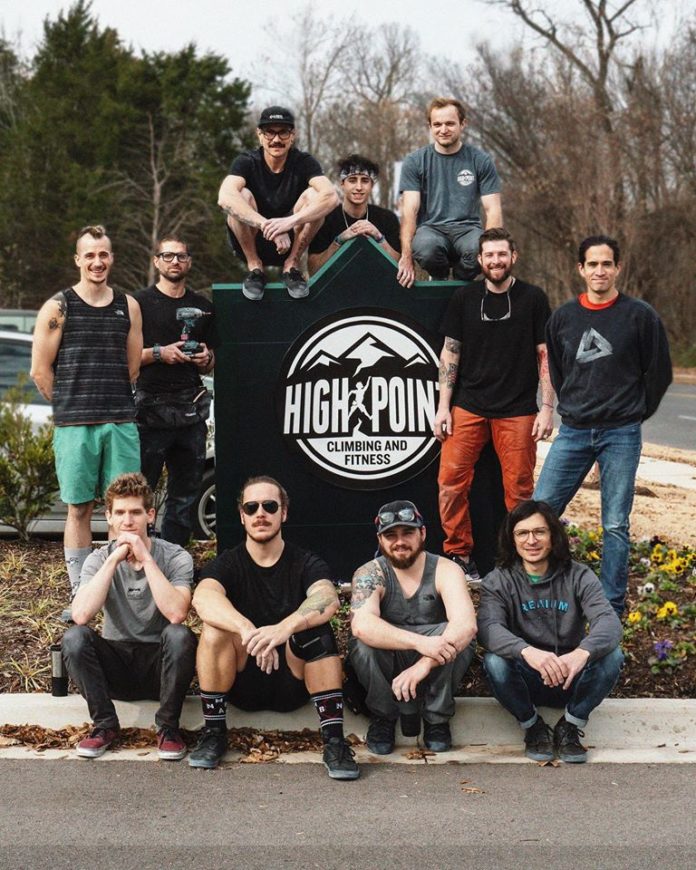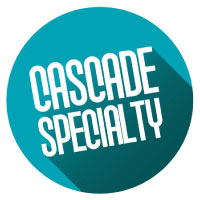 This article was made possible through the support of CBJ members like Cascade Specialty. They are leaders in rock climbing facility flooring with over two decades of experience in the U.S. and Canada.
This article was made possible through the support of CBJ members like Cascade Specialty. They are leaders in rock climbing facility flooring with over two decades of experience in the U.S. and Canada.
We don’t put our content behind a paywall, but we do rely on the support of readers like you to pay our core staff: John Burgman, Joe Robinson and Jamie Strong. Please consider joining our family of members.
Behind the Wrench…is an ongoing series that interviews the “rock stars” of the climbing industry: the routesetters at the gyms. This time CBJ goes to Tennessee to talk about one gym’s expansion around the greater Southeast, and what it means for a routesetter to set for multiple communities and also be part of a gym’s corporate management team.
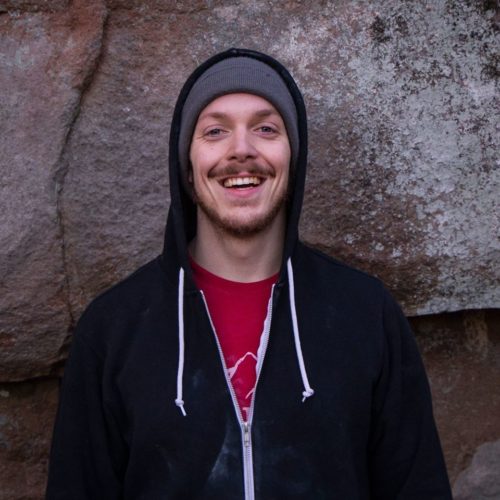
Name: Cody Grodzki
Title: Director of Routesetting
Home Gym: High Point Climbing and Fitness
Location: Chattanooga, Tennessee
CBJ: I’ve heard that you’re from Boston, but now you’re setting in Tennessee. Tell me about how you got there, and how climbing and routesetting fit into the equation.
GRODZKI: I started climbing and routesetting nearly simultaneously at Carabiner’s Indoor Climbing in New Bedford, Massachusetts, in the late 2000s. Everything about setting during that time period was what I fondly call ‘Wild West routesetting’—no rules, limited to no setting training, no work-at-height training, hand-over-hand GriGri self-belay ascension with no risk management procedures in place…the list goes on. Without going into every detail, if you set during this period you remember all too well; if you didn’t, well, you didn’t miss much except for blownout backs and metal t-nut shavings in your eyes. I digress.
In the late 2000s and early 2010s, I was setting, coaching and guiding for MetroRock Climbing in Boston during what I would consider to be one the most energetic and exciting times to be a competition climber in the Northeast (and maybe even the country, although I’m a bit biased). Competition climbing was really starting to get a hold of people’s attention, and MetroRock was at the forefront with its creation of the Dark Horse Bouldering Series. Up until this point, routesetting was a fun job for me to focus on right out of high school and into my early college years. It was not something I necessarily thought could become a long-term career.
And then I met Josh Larson and Dave Wetmore, the co-creators of Dark Horse and absolute monsters in whatever climbing discipline they choose. They took me under their wing in a way that fully shaped my understanding, perception and consumption of routesetting and rock climbing. I worked under them as a full-time routesetter for a number of years while attending the University of New Hampshire. After graduating with my B.S. in Kinesiology (with a focus on Outdoor Education), I had a difficult decision to make: continue working with Josh, Dave and my super tight friend group in Boston; or set out towards this opportunity with High Point that presented itself over 1,000 miles away from home. Although I sometimes miss the old days, I wouldn’t change a thing.
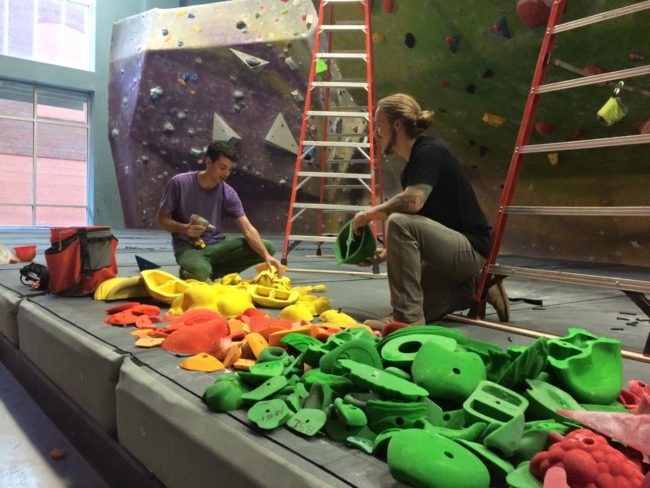
CBJ: High Point has a number of different locations and, thus, High Point serves a number of different communities. So, what’s it like—and what are the challenges—of setting for so many places?
GRODZKI: We operate five (soon to be six) different climbing gyms. Each one of them has varying community needs and services. They all have their own certain feel and culture that is unique. I feel this is in large part due to the distances between each facility. Chattanooga, Birmingham and Huntsville are all roughly two hours apart, and each community consumes climbing a bit differently. Honestly, even the two gyms we have in Chattanooga that are five miles apart serve very different communities. Both myself and the setting teams at each location have to be cognizant of that in our day-to-day operations.
To delve a bit deeper and paint a clearer picture, it’s probably a bit easier to use real life situations. For example, in Huntsville we have a huge faction of new, passionate climbers who spend a majority of their climbing time in the gym. That’s not to say that we don’t have a group of strong, passionate local climbers (which we very much do). It’s more to say that a large number of folks who come in to climb are looking for a new, fun way to exercise and learn about an exciting sport that’s popped up right in their backyard.
In contrast, take Chattanooga. It has a super passionate and experienced outdoor climbing community. They tend to use our facilities as intermediaries for their outdoor sessions. On average, this translates to greater density of harder, training-oriented climbs in our Chattanooga gyms; a greater density of new-user friendly, educationally focused climbs in Huntsville.
That, of course, is just one anecdotal example. Memphis, Birmingham, Huntsville, Downtown, Riverside and now Cleveland all have their own way about them. They have climbs being set for beginners, youth team kids, trad-daddies, weekend warriors and pro climbers alike. It can be difficult to meet everyone’s needs, with creative problem solving needed just as often as anything else. But if it was easy and straightforward, I don’t know if I’d still be routesetting.
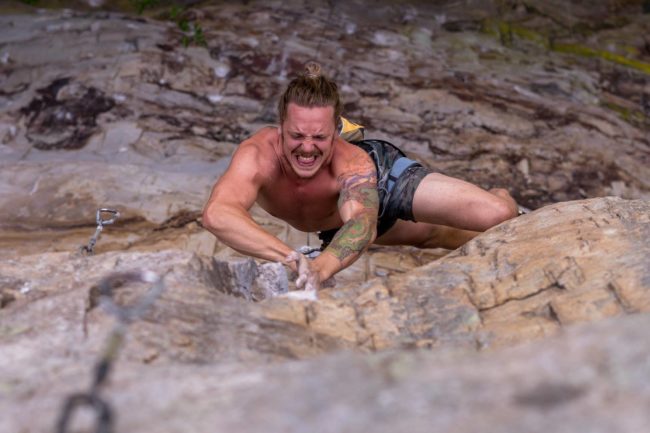
CBJ: Speaking of meeting everyone’s needs, how would you describe your setting style? And do you have any background or interests in non-climbing activities that you think influences your setting?
GRODZKI: I’d like to think that my setting style reflects the needs of the situation more than anything else. Typically when people look at me, they are quick to think that I like big, powerful, dynamic climbing on steep overhangs. Sure, that style is definitely fun and has its place in most commercial environments. But it’s our job to look at the overarching needs of the community and supply a product that fits those needs best. That doesn’t necessarily mean that a routesetter should exclusively set within those parameters, as I believe a massive part of our jobs is to educate. But it’s a very important consideration.
All that said, I’d say that climbing style is generally a bit more personal to the individual. Everyone is built a bit differently, having inherent advantages and disadvantages based on body type and background. I grew up in Boston playing way too much hockey for the better part of my life. I developed a strong lower body with a fair amount of flexibility and mobility in that region. Translated to climbing, I tend to climb fairly well on complex, technical sequences that revolve around pressing and stemming—climbs that have more of a lower body focus. Pulling hard is still all well and good. But it ain’t easy tugging 225 pounds up a wall, regardless of style or hold type.
CBJ: You oversee a whole team of routesetters. How do you manage to keep so many creative visions happily collaborating? Is it ever challenging to oversee a group of artists?
GRODZKI: Great question. Personally, I like to compare routesetting a bit more to design than art. Design has a functional component that I think is important to identify for routesetters. But to the same end, the goals and visions should ultimately be tailored to the end users—members, teams and first-time climbers alike. By considering who we are setting for, conversations tend to stay away from a ‘me,’ ‘I,’ ‘my’ focus, and towards an ‘us’ focus. Sure, there are individual creative visions throughout that process. But you already mentioned the key—collaboration. It’s a team effort through and through. No routesetter’s vision is more or less important, just as nobody’s climbing style or body type should be more or less contemplated throughout our processes.
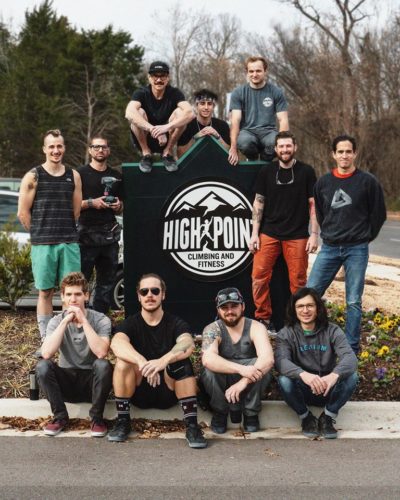
A major part of my role as Director of Routesetting is to support, empower and educate High Point’s routesetting staff, both directly—by setting at each location with the crews on the ground—as well as indirectly, through conversations and meetings with head routesetters, general managers and the management team. Making it work on all levels requires a tremendous amount of communication and time management. Like, a ton.
For perspective, I have seven Apple Calendars for High Point alone—one for each facility, one for the management team. I schedule weekly meetings with each head routesetter, visit each facility about once a month for anywhere from one to eight days at a stretch, have scheduled calls with each facility’s general manager, and have weekly scheduled management team meetings at the High Point headquarters. We’re even demoing a brand-new routesetting management software to keep everyone on the same page in regard to routesetting company-wide. It’s a lot of brainstorming, strategic planning and thoughtful execution, to say the least.
CBJ: The mention of routesetting management software is an interesting springboard. Do you think the climbing community is doing enough to foster routesetting as a skill and develop new setters?
GRODZKI: Routesetting as a profession has exploded onto the U.S. scene in the past 10 years in a way that I don’t think many people expected. This has led to a bit of a scramble by many companies to hire qualified routesetters, to say nothing of qualified routesetting managers (assistants, heads setters, directors). USA Climbing has been doing a good job of educating folks on the competitive side of routesetting, with a bit of commercial education being introduced at Level 1 clinics. But by and large, it is not their focus or intention to produce commercial routesetters. More recently, the Routesetting Institute has been working towards creating a commercial certification program in tandem with the CWA. But as of this writing, it’s still a work in progress, due to the immense workload and education necessary to design, create and implement a program of this nature.
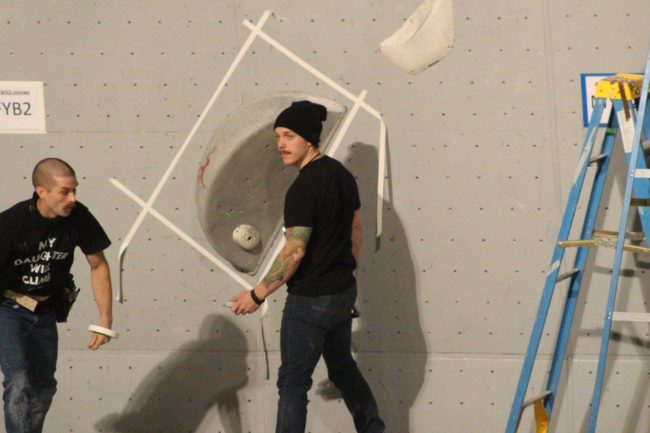
That leaves us with basically two options in the meantime: internal training and external hires. Large climbing operators (all of whom are going through rapid expansions and growth) are leaning heavily on their upper management to internally develop routesetters from within their own communities. This process takes a great deal of investment, and there’s no guarantee on the outcome. External hires, on the other hand, are much swifter and easier to implement; the routesetter already has the requisite skills necessary to begin working as a higher value employee. But it typically comes at a much higher financial cost to the company. It can be very tricky to navigate the balance of external hires to internal trainees. It’s a process that is increasingly individualized to every company that encounters this ever-present issue.
CBJ: Shifting gears a bit, there will be a lot of routesetters who read this. Talk us through your favorite move to set.
GRODZKI: There’s no one move that is my favorite—I go through phases of exploration more often than anything else. Sometimes I’ll see a move or sequence that is really interesting and use that as a starting point. From there, I may attempt to recreate the move or some iteration of it. In that process, I’m searching out positions and movements that may be occurring naturally, even if they don’t always exactly emulate the initial intention.
That said, I do enjoy creating full-value experiences for climbers to interact with on multiple levels: physically, mentally and—if all things come together—maybe even emotionally. The most recent and pronounced example I can think of was a route that Chris LoCrasto, Ryan Sewell and I set for the Women’s Final at this year’s Combined Invitational. The climbing as a whole was very three-dimensional, with upwards of two thousand pounds of wood and fiberglass volumes basically terraforming this otherwise simple, overhanging lead wall.
For this one section in particular, we designed an environment that mimicked a sort of mouth or faux cave at the steepest part of the overhang. This created a scenario in which the athletes had to fully rotate 180 degrees, ultimately in a face-out press for a few moves, to get to the next holds. Even while forerunning, the experience was kind of overwhelming when you climbed through it. This was in part because of the complexity and intensity required to enter, negotiate and exit the sequence. It was also because while you were trying to execute everything properly, you were looking straight out into the lights, the cameras—and in the case of the athletes, the screaming crowd. It was a really full-value experience.
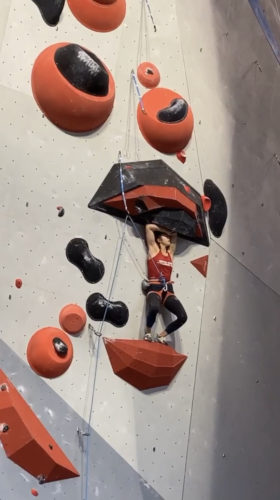
CBJ: To close, what’s the best routesetting advice you have ever received?
GRODZKI: Less on advice I have received, and more on how I try to approach my life and, as an extension, routesetting: try hard, try hard, try hard. And make it work.
Try really hard, regardless of the task at hand. But in that, don’t lose sight of why you’re doing it. Set with intention. Work with intention. Be the person that people want to be around, the one they want to work with during the long days, and the one that they look towards when the going gets tough. Think creatively and explore new opportunities, whether it’s within a single movement on a boulder or a new setting job across the country. But also be the first one to put your nose to the grindstone and work your ass off. Make friends. Be proud of your work. That’s all not necessarily routesetting specific. But at the end of the day, it’s what I try to live by.
Got a cool story? Tell us!
Do you know a routesetter in our industry who would be good to profile in a Behind the Wrench segment? Or, are you a routesetter and have a personal background that you think others would enjoy learning about? If so, please contact us and tell us about it.

John Burgman is the author of High Drama, a book that chronicles the history of American competition climbing. He is a Fulbright journalism grant recipient and a former magazine editor. He holds a master’s degree from New York University and bachelor’s degree from Miami University. In addition to writing, he coaches a youth bouldering team. Follow him on Twitter @John_Burgman and Instagram @jbclimbs. Read our interview Meet John Burgman, U.S. Comp Climbing’s Top Journalist.



